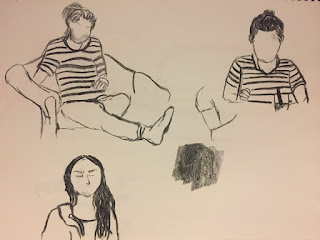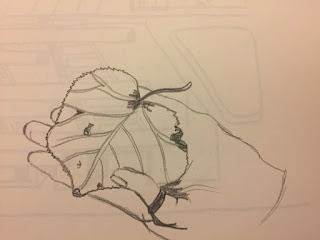What went well:
According to my peer feedback sheet, the elements of my work that were the most well received were the colour scheme used ( and how this matched the article), the materials and processes (the collage) and the simplicity of the images. I was SO chuffed with people commenting on the simplicity as this was something I really had to remind myself to do, to simplify what normally would have been very complex images in my work. Its shown me that it is possible and therefore I will do it again.
What can be improved:
I actually got some really interesting critical feedback from this session, with a number of people suggesting that I used digital process to enhance the hand- drawn images. This is something I briefly did on the computer but only to neaten. Maybe now I could try editing colours and textures. Someone else suggested using textiles and sewing which was a suggestion that made me really excited. I've used this kind of process in work before and forgot how much I'd enjoyed it but can't wait to use it again soon!
The final suggestions were that I scanned in my images to flatten them which is actually something I had done but now realise it would have been more helpful to lay both handmade and scanned versions out side by side maybe for people to decide which worked better? As when put next to each other me and Holly both agreed we liked the handmade ones more.
Overall this project went much better than expected and I surprised myself by working successfully within size and colour constraints. I was also pleased that my peers managed to work out the themes of the images and didn't seem too confused by them.






















































